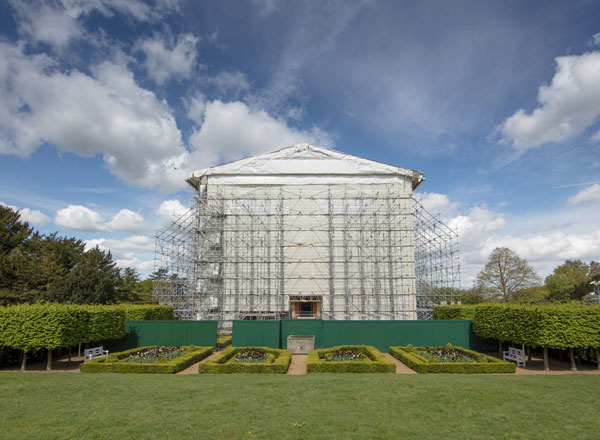Launching on 22 July, TwelveTrees Park is a new, cosmopolitan neighbourhood for London Located minutes between Stratford and Canary Wharf with five rail and tube lines on the doorstep, as well as London City Airport and Crossrail within 10 minutes, this is one of the best-connected developments in London It will provide over 3,800 homes and includes plans for shops, restaurants and a new 4.5 acre WiFi-enabled park Over half the 26.2 acre site is dedicated to green spaces, creating a lush and tranquil setting just minutes from the City This mixed-use development will be a blueprint for modern living. It has been designed with connectivity at its heart, whether to nature, to London or to the community The neighbourhood will provide a new home for the acclaimed East London Science School, as well as a number of maker-space studios to help creativity flourish The area boasts a rich history. Formerly owned by 19th Century industrialist, Harper Twelvetrees, the site was once home to the Imperial Works soap factory. Twelvetrees was a prominent anti-slavery campaigner and built homes on the site for some of his lowest paid workers. Its reinvention will deliver homes for people at every stage of life and create a new place for people to live, work, learn and socialise Studios, one-, two- and three-bedroom apartments and penthouses are available, with homes at Evergreen Point the first to be offered to customers Prices start from £385,000 for a studio Berkeley is launching TwelveTrees Park, a dynamic new place for London on 22 July, which will see West Ham become an integral part of the wider transformation of Stratford. The 3,838-home mixed-use regeneration scheme in East London is Berkeley’s furthest foray east, north of the river. Set to become the benchmark for future living in London with health and wellbeing at the heart of its design, TwelveTrees Park will add to East London’s diverse and vibrant cultural scene. The development is an exciting prospect for people looking for city living combined with expansive green space on their doorstep, and trendsetters who want to be part of the city’s next big destination. With house price growth in Newham expected to be among the highest in London, and the wider Lower Lea Valley experiencing a renaissance, TwelveTrees Park is a solid long-term investment for buyers looking for value in the capital. Offering a stylish mix of studios, one-, two- and three-bedroom homes, as well as apartments purpose-built for rent and homes available under shared ownership, TwelveTrees Park offers something for everyone. With views of London’s cityscape and designed with modern lifestyles in mind, Berkeley’s new development epitomises urban living. It enables people to live connected: to London and beyond with fantastic transport links; to nature with over 50% of the site dedicated to green space; to neighbours through a strong community focus; and connected digitally with a fully WiFi-enabled park. Evergreen Point is the first building to launch at TwelveTrees Park and comprises studios, one-, two-, and three-bedroom apartments. A collection of penthouses are also in the final stages of development. Sat in the heart of the development and offering panoramic views across London, the building is located at the entrance to the park, close to the community hub and to West Ham station, giving residents access to the city. Apartments at TwelveTrees Park have been designed with practical, everyday living in mind. Residents can benefit from ample in-built storage, and have access to a gym, business lounge and 24-hour concierge service. There will also be a car park with electric charging points and bicycle storage. TwelveTrees Park is a blueprint for healthier, balanced living in the city – over half the scheme is green space, encouraging active, outdoor lifestyles and providing places to relax, reflect and restore. The on-site community gardens offer residents flexible space for activities, from gardening to education to group meetings and parties. The 4.5 acre linear park will be at the heart of the development and a focal point for people to meet and socialise, with restaurants and cafés spilling out into the park as part of a new shopping and leisure quarter at the development. Reflecting twenty-first century living, the central park will be fully WiFi-enabled meaning those who work or study from home will have the flexibility to be outdoors and surrounded by nature, while maker-space studios support London’s budding creatives in the pursuit of their passions. TwelveTrees Park will breathe new life into this once industrial part of London, transforming derelict brownfield land into a thriving new community that reflects the history and distinctive character of the local area. By opening up the site, creating two new foot bridges and updating the existing road bridge, including direct access to West Ham station, Berkeley is delivering an important new piece of the jigsaw to help connect the vibrant tapestry of East London. Positioned between Stratford, the Olympic Park and Canary Wharf, TwelveTrees Park benefits from five rail and tube lines on its doorstep, meaning easy access to the city centre and its landmark shopping, tourist and business destinations, including Canary Wharf in only seven minutes. With quick links to Crossrail, and London City Airport just 10 minutes away, residents can easily explore the capital and connect to destinations worldwide. TwelveTrees Park isn’t just a place to live: it’s a community that will educate and inspire future generations. A new, 1,000-pupil state-of-the-art home for the East London Science School will include a specially designed science garden with an outdoor lab and physics garden, a sports hall and a lecture theatre. The science school will be a focal point for the entire community with the facilities used after school hours for activities and events, such as hosting talks on current trending topics and holding fitness classes. Justin Tibaldi, divisional managing director at Berkeley Homes (Capital), commented: “We’re very excited to unveil our vision for TwelveTrees Park – a vibrant new neighbourhood that will be a gamechanger for West Ham and the wider regeneration of the lower Lea Valley. This will be









